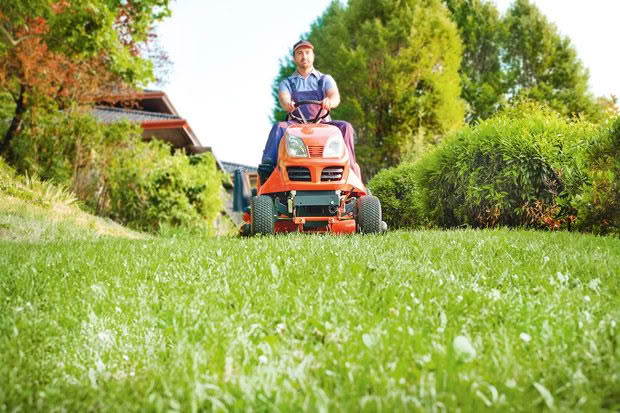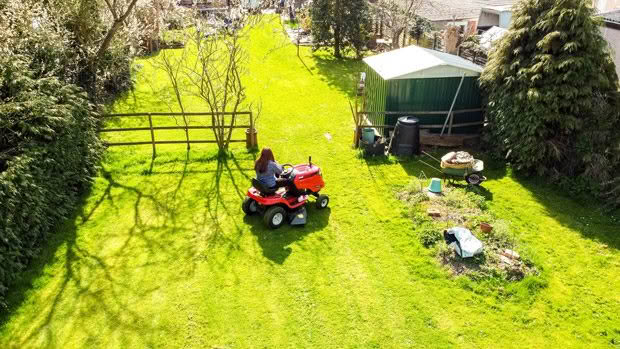Ready, set, check the oil: How to give your ride-on mower a spring spruce-up

Spring grass is often thick and lush, putting extra stress on your ride-on mower, so give it a spring makeover.
Words: Nadene Hall
1. Before using your mower, always lift the engine housing and check for birds, mice, or rat nests, especially in spring. Some birds can build nests in just a few hours.
2. Check your fuel tank for debris that may block the outlet.
3. Check deck belt/s for wear, and that the idler pulley is holding the belt/s at the correct tension.
4. Check the oil, oil filter, air filter, and fuel filter.
5. Check the tyre pressure – a partly deflated tyre can cause the deck to cut grass unevenly or scalp it, and damage the tyre.
Your ride-on mower’s manual should tell you the correct tyre pressure. It’s far lower than a car, usually around 10psi for rear tyres, and 12-14psi for front tyres. The recommended psi is usually also written on the sidewall of the tyre.

6. Check safety switches automatically stop the blades turning. The most common one is under the operator’s seat and will bring blades and/or the engine to a complete stop if you get up off the seat with the blades still engaged.
7. Are safety flaps or guards in place, especially around the discharge chute?
8. Always wash the deck after using it, especially underneath, to avoid grass build-up, which can cause rust.
WHAT TO CHECK UNDER THE DECK
Ensure the mower is in neutral, blades are off, the engine is off, and keys are out of the ignition.
If blades have rounded edges or burrs, they need sharpening.
Check for missing tips, especially if you hit something. You may not notice anything as you mow, but a missing tip, or worse, a bent or damaged blade, will unbalance the other blades, causing vibrations that can damage the deck and bearings.
Hold the blade tip in your hand and see if you can move the blade up or down. If a blade moves more than 3-5mm, it’s a sign of a worn bearing that needs replacement.
Use your hand to turn the blade/s. A blade should spin freely and quietly. If you hear a scraping or crunching sound, don’t run the deck. Get the bearings and spindle housing checked before you use it again.
MORE HERE
Love this story? Subscribe now!
 This article first appeared in NZ Lifestyle Block Magazine.
This article first appeared in NZ Lifestyle Block Magazine.
